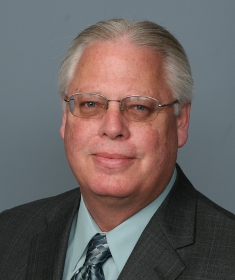Executive Leadership's Dual Role: Evolving the Future + Honoring the Past
An interview with Tom Roth, COO, Wilson Learning Worldwide

You have over 40 years in the field of leadership development and are well into your second decade as an executive leader responsible for strategic direction and business performance of a global training organization. What insight for success can you share with the emerging generation of C-suite leaders?
Gain clarity. Understand what your role is. All levels of leaders, and especially executive leaders, are expected to promote change and continually renew the organization. And, they are equally expected to protect and hold onto the constants—those enduring tenets like organizational values, mission, and culture that do not change. It’s a balancing act, recognizing the dynamic tension of evolving the future and honoring the past.
It may seem contradictory, because change by its very nature looks to a future direction while constancy digs its roots in the past. But, in fact, both “Pathfinding” (blazing new trails and taking people where they would not go without being led) and “Stewardship” (never forgetting and protecting who the organization is and why it exists) must coexist.
Successful leaders balance both the Pathfinder and Steward roles.
A few years ago, Wilson Learning celebrated 50 years as an industry leader. You quoted Thomas Jefferson from the early 1800s: “In matters of style, swim with the current; in matters of principle, stand like a rock.” How does that translate for today’s executive leadership?
Leading organizations that are trying to create and sustain strategic advantage in today’s rapidly changing environment require executive leaders to constantly make decisions about what to grow, what to innovate, and what new technologies and possibilities to act on—matters of style.
For example, matters of “style” for Wilson Learning are new applications for delivering training or adjusting how we interface with a customer organization’s LMS.
In matters of principle, we’ve always been unwavering in our humanistic stand to deliver performance with fulfillment. Our value of “win-win problem-solving” is at our core and must be evident in every customer relationship and among employee daily interactions. As COO, I stand firm on matters of principle—matters of substance that define and differentiate us.
So, while it’s critical to understand the conditions in the marketplace or with customers that demand decisions to swim with the current, we stand like a rock on the foundation of organizational DNA—values, mission, vision, and culture.
You’ve mentioned culture a couple of times. What do executive leaders have to do with culture? Aren’t they too busy with other high-level affairs of the organization?
The good news is that at the executive level, C-suite leaders typically have a strong team of leaders responsible for managing people on a day-to-day basis. Executive leadership is needed to ensure there are systems, processes, and a culture in place to sustain the organization’s performance over time.
Every organization has a culture. It either has a culture by design or a culture by default.
Culture is made up of beliefs, values, and behaviors that contribute to the unique social and psychological environment of an organization. As leaders advance into the executive suite, they are in a unique position to shape the culture. They can take responsibility for proactively creating a culture that supports the company’s vision, mission, values, strategic direction, and employee engagement. Or, they can reactively allow the culture to exist—letting the default elevator behavior take precedence.
It feels like employee performance and engagement are guided by an organization’s culture. How can a leader make something like “culture,” which seems intangible, more tangible?
Let me give you two words: communication strategy. A strategic leadership skill is communicating strategy and organizational passion.
Executives need to communicate the future direction of the organization by conveying a sense of going forward in the context of opportunity and growth. Creating excitement, passion, and engagement in the members of an organization is critical and, unfortunately, often lacking.
Many leaders emphasize the importance of the vision and strategy to the success of the business, but often fall short on helping people connect to this vision so they can personally contribute value and experience fulfillment.
With your years of experience assisting global executive leadership teams with issues related to employee engagement, leadership development, strategy alignment, and business transformation, what is the most influential thing an executive can do to bring about great success, or great failure, for that matter?
There are many things a leader can do, but his or her leadership character—who a leader wants to be—is responsible for the great failure or great success of a company. The character of the leader takes on even more importance for executive leaders, as they are responsible for the consistency of communication, action, integrity, transparency, and being the example for other leaders and employees to follow.
In times of change, people are looking for some kind of constancy at work. They can only get that from leaders who are clear on what they stand for (who they want to be) and behave with integrity to ensure their actions support what they stand for.
We refer to this as Character-Based Leadership. They lead from the front.
To learn more about Wilson Learning’s approach to developing leaders at all levels, download the e-book Mastering the Role of Leader.
DOWNLOAD E-BOOK
更多信息请洽021-23571788。







 请填写此表格下载Executive Leadership's Dual Role: Evolving the Future + Honoring the Past | An interview with Tom Roth, COO, Wilson Learning Worldwide。
请填写此表格下载Executive Leadership's Dual Role: Evolving the Future + Honoring the Past | An interview with Tom Roth, COO, Wilson Learning Worldwide。





